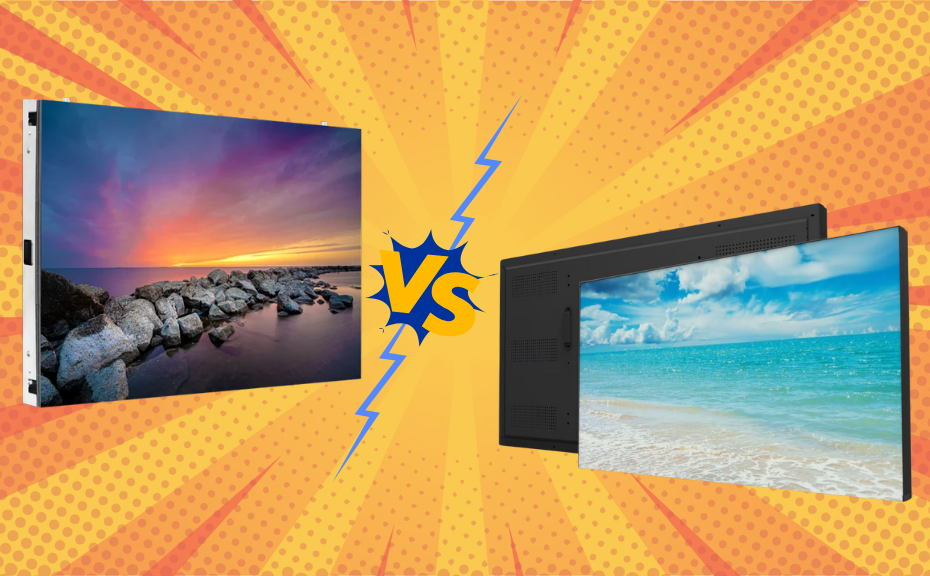LED Video Wall vs LCD Video Wall | In the world of visual display technology, two popular choices stand out LED video walls and LCD video walls. Both offer unique advantages and are suited for different applications. Understanding these differences can help you decide which is the best option for your needs.
An LED (Light Emitting Diode) video wall is composed of individual LED panels that come together to create a large, seamless display. These panels emit their own light, which allows for higher brightness levels, more vibrant colors, and better contrast compared to traditional displays. LED video walls are particularly favored in environments where visuals need to grab attention, such as in stadiums, concerts, and advertising.
On the other hand, an LCD (Liquid Crystal Display) video wall consists of multiple LCD screens tiled together to form a large display area. Unlike LED, LCD screens require a backlight to illuminate the images, which can limit their brightness and contrast levels. However, LCD technology has its own set of advantages.
Comparing Key Features
When deciding between an LED and an LCD video wall, there are several key features to consider:
1. LED video walls excel in brightness and color vibrancy, making them perfect for environments with lots of ambient light. Conversely, LCD video walls can struggle in bright settings but can provide excellent color accuracy in controlled lighting.
2. LED walls offer superior viewing angles. This makes them ideal for large venues and public displays, where viewers may be positioned at various angles. LCD screens can experience color shifts when viewed from extreme angles, which could affect the overall experience.
3. LED video walls tend to be more flexible in terms of installation since they are modular and can be configured in various shapes and sizes. LCD video walls, while easier to assemble in a straight line, can require more careful alignment and calibration.
4. Generally, LCD video walls are more cost-effective upfront than their LED counterparts. However, when considering long-term costs, including energy consumption and potential replacement, LED walls may offer savings down the line, given their longevity and lower power requirements.
Conclusion
The choice between LED and LCD video walls depends on the specific needs of your project. For high-impact environments needing vibrant displays, LED walls are often the go-to option. If budget constraints are a priority and the display will be used in less intense lighting conditions, LCD video walls present a compelling solution.


